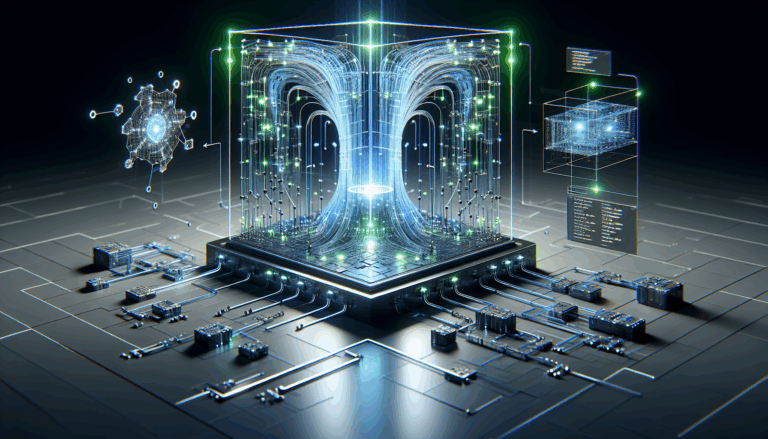Defining Agentic AI: Beyond the Basics
Agentic AI represents a new chapter in artificial intelligence, moving far beyond the familiar confines of conversational chatbots. While most people associate AI with automated support agents or smart replies, agentic AI embodies a system that acts with autonomy, goal-orientation, and adaptive reasoning. To understand agentic AI, one must look at its defining capabilities—ability to set objectives, formulate plans, make independent decisions, and act in dynamic environments with limited supervision.
Rather than simply responding to queries within a set script, agentic AI systems are engineered to take initiative. For example, an agentic AI in logistics can monitor inventory levels, predict supply chain disruptions, and proactively reorder stock without human intervention. This autonomy allows businesses to run more efficiently, responding instantly to changes rather than waiting for a direct prompt.
Another core aspect of agentic AI is its capacity for multi-step reasoning and task execution. Unlike classic chatbots, which rely on narrow, pre-programmed responses, agentic AI can break down complex tasks into manageable steps, evaluate the best pathways to reach a goal, and learn from new information or environmental feedback. Consider AI-driven research assistants, which can formulate hypotheses, seek out data across vast sources, and synthesize findings into actionable insights—to the extent that recent advances in scientific discovery have credited such systems with accelerating innovation.
Key steps that highlight how agentic AI operates include:
- Objective Setting: Given a high-level goal, the system defines specific targets. For example, “improve sales performance” can translate into automating market analysis and outreach strategies.
- Planning and Sequencing: The AI outlines a roadmap, determining which tasks must occur in what order for the desired outcome—for instance, identifying market trends before launching a campaign.
- Action and Adaptation: The agentic AI executes tasks, monitors results, and adjusts its strategy as needed, reflecting a capacity for learning and self-improvement. Systems like those researched at Stanford AI Lab are already demonstrating such functions.
- Collaboration: These AIs can interact with humans or other systems, providing insights, requesting clarification, or handing off when their intervention is required—a hallmark of truly effective agents, as discussed by MIT researchers in collaborative robotics.
As agentic AI continues to mature, it’s clear that it stands on a different foundation from genre-defining chatbots. Instead of simply mimicking conversation, agentic AI is defined by autonomy, versatility, and an ability to learn and act—making it a transformative force across industries and a subject of ongoing academic inquiry (Stanford HAI: What Does It Mean to Be an AI Agent?).
Myth 1: Agentic AI Is Just Advanced Chatbots
It’s a common misconception that agentic AI is simply a fancier version of today’s chatbots, capable only of answering questions, generating text, or handling simple tasks. While chatbots—as popularized by digital assistants like Siri or customer service bots—demonstrate impressive natural language processing, agentic AI operates at a fundamentally higher level of autonomy, complexity, and capability.
Agentic AI refers to intelligent systems that can make decisions, take initiatives, and pursue goals in dynamic environments—sometimes without direct, step-by-step human input. By contrast, traditional chatbots are generally reactive: they respond to queries within a tightly defined context. Consider the distinctions through these key points:
- Proactive Autonomy: Unlike standard chatbots that wait for a prompt, agentic AI can independently identify opportunities, set objectives, and execute multi-step plans. For example, an agentic AI in a business setting could recognize a drop in website traffic, hypothesize causes, devise experiments, run A/B tests, analyze results, and implement changes—all without awaiting explicit direction. This proactive problem solving is discussed in-depth in the MIT Press’s review of agentic computing.
- Complex Task Execution: Agentic AI excels in tasks requiring coordination, interaction, and synthesis across different domains. Imagine a travel-planning AI: a chatbot could book a flight when asked, but an agentic AI autonomously finds optimal travel routes, books multi-modal transportation and hotels, sends reminders, and even adjusts plans in real time based on weather or travel alerts. For more on multi-step task automation, see this Stanford HAI article.
- Learning and Adaptation: While chatbots tend to follow scripts or predefined logic trees, agentic AI systems leverage techniques like reinforcement learning to adapt strategies based on outcomes, improving over time. This adaptive intelligence enables applications such as automated scientific discovery or autonomous robotics, as highlighted by MIT Technology Review.
- Interacting with the World: Agentic AI often operates in broader virtual or physical environments, orchestrating actions across multiple systems and platforms. For instance, in supply chain management, an AI agent can coordinate logistics between suppliers, manage inventory fluctuations, and negotiate orders—all while complying with changing regulations. This level of integration far surpasses even the best chatbots.
In summary, equating agentic AI to chatbots is like comparing a calculator to a research scientist. While both operate using logic and language, agentic AI’s capacity for self-direction, autonomy, and complex reasoning positions it to transform industries far beyond mere conversational interfaces. For a technical overview, consult resources by arXiv’s collection on AI agents.
Myth 2: Agentic AI Lacks Decision-Making Power
It’s a common misconception that agentic AI systems are merely passive helpers that need to ask for permission or lack real ability to make decisions. However, the landscape of artificial intelligence has evolved far beyond static chatbots that reply with canned responses. Modern agentic AI is designed to autonomously analyze situations, weigh alternatives, and take decisive actions based on a defined set of objectives.
Where traditional chatbots typically follow a scripted flow (“If user says X, reply Y”), agentic AI operates with autonomy and can make intricate decisions on behalf of users or organizations. This leap is possible thanks to advancements in machine learning, reinforcement learning, and large language models—enabling AI agents to not just process information, but actively reason, plan, and execute tasks.
- Contextual Awareness: Agentic AI doesn’t simply react. It understands context, evaluates goals, and determines the best course of action. For instance, in autonomous vehicle technology, AI must continually decide when to change lanes, slow down, or stop—taking into account not just its programmed rules, but environmental inputs, map data, and predictions about nearby vehicles.
- Multi-Step Decision-Making: Rather than operating on a single-step prompt/response loop, agentic AI can break down complex goals into sub-tasks, make a sequence of decisions, and adjust its approach as new data emerges. For example, an AI personal assistant can manage a project by scheduling meetings, booking resources, flagging conflicts, and reprioritizing based on deadlines—all without constant human intervention.
- Learning from Outcomes: Agentic systems incorporate feedback loops where decisions are assessed for effectiveness and the AI adapts over time. In areas like business process automation, agents can shift strategies—choosing optimal suppliers, reallocating resources, or renegotiating contracts—based on prior performance and outcomes.
Notably, cutting-edge agentic AI platforms go beyond routine tasks and can handle open-ended scenarios where the path to the solution isn’t predefined. Their decision-making power rivals, and sometimes exceeds, human capability—provided the frameworks are ethical, transparent, and built with robust oversight.
In summary, agentic AI systems are not just responsive tools—they are decision-makers, planners, and autonomous agents propelling industries forward through smart, context-aware, and continually improving actions. Their increasing independence marks a significant evolution in what AI can achieve compared to the chatbots of yesterday.
Myth 3: Agentic AI Can’t Operate Autonomously
One of the most persistent misconceptions about agentic AI is that it can’t truly operate without direct human oversight or instruction. While this may have been the case with traditional chatbots—limited in scope, reliant on predefined scripts, and only as responsive as their programming allowed—the landscape of agentic AI paints a far more autonomous picture.
Agentic AI systems are designed to initiate actions, execute complex multi-step tasks, and adapt their strategies based on changing contexts. Unlike standard chatbots, which merely respond to user queries, agentic AI can set its own objectives within a given framework and pursue them independently. For example, consider AI research assistants like Microsoft’s Autonomous Systems, which can plan, learn, and act in dynamic real-world environments with minimal human input.
Let’s break down how agentic AI achieves this level of autonomy:
- Goal-Driven Initiatives: Agentic AI can be given a broad objective—say, “optimize warehouse logistics”—and then devise its own plan, breaking the objective down into actionable steps, monitoring progress, and adjusting tactics as new data comes in. This is a significant leap beyond the reactive functionality of traditional chatbots.
- Self-Supervision and Learning: Modern agentic AI leverages techniques like reinforcement learning to improve its performance based on trial and error. For example, in industrial settings, AI can learn workflows from existing patterns and then run simulations to optimize efficiency, troubleshoot disruptions, or even propose innovative solutions.
- Environment Interaction: Agentic AI can interact with its environment, whether digital or physical, collecting real-time data, sensing deviations, and autonomously recalibrating its actions. Projects like OpenAI’s Autonomous Agents demonstrate how AI can coordinate with hardware, execute physical tasks, and negotiate with external systems without step-by-step directions.
- Multi-Agent Collaboration: Some agentic AI systems are designed to work in tandem, collaboratively solving complex problems. For instance, autonomous vehicles share data and coordinate to ensure traffic safety—a scenario explored in research from MIT on swarm robotics and collaborative AI.
Real-world examples illustrate these capabilities in practice. Consider how AI-driven platforms like Tesla’s Autopilot operate with a high degree of independence, continuously interpreting traffic conditions and making decisions in real time. In finance, agentic trading bots analyze vast market datasets, execute trades, and adapt to macroeconomic fluctuations—often without human intervention.
In summary, the notion that agentic AI is chained to human instruction is outdated. Today’s agentic AI systems are not shackled by rigid workflows or oversight—they are dynamic, independent problem-solvers capable of sustained autonomous operation, driving innovation and efficiency across a range of industries. For a deeper dive into the mechanics and advancements of agentic AI, visit this Stanford University blog post on autonomous AI systems.
Myth 4: Real-World Uses Are Limited
Many people still hold the belief that agentic AI systems are only helpful for narrow, repetitive tasks like chatbots, customer support, or answering simple queries. While these are certainly prominent uses, the real-world applications of agentic AI extend far beyond these limited arenas. The truth is, agentic AI is actively reshaping industries, supercharging workflows, and even saving lives. Here’s a look at how agentic AI is making a significant impact in ways you might not expect:
- Healthcare and Medical Research: Modern agentic AI doesn’t just answer patient FAQs — it’s diagnosing diseases, predicting patient outcomes, and personalizing treatments. For instance, systems powered by AI, such as IBM’s Watson Health, have been able to sift through vast medical data, identify patterns missed by human doctors, and recommend treatments thus improving diagnostic accuracy (HealthIT.gov).
- Scientific Discovery and Innovation: AI agents are now used by researchers to design experiments, analyze data, and even make discoveries. For example, DeepMind’s AlphaFold solved the decades-old protein folding problem, accelerating drug discovery and biology research (Nature).
- Supply Chain Optimization: In the logistics sector, agentic AI is responsible for dynamic route planning, resource allocation, and autonomous warehousing. Amazon uses AI-powered robots to manage inventory and optimize shipping routes, reducing delivery times and increasing efficiency (The Wall Street Journal).
- Personalized Education: In education, AI agents act as tutors, curriculum designers, and even classroom assistants. These systems adapt to each student’s learning pace, recommend resources, and offer personalized feedback, helping improve student outcomes across the globe (Education Week).
- Financial Services and Fraud Detection: AI doesn’t merely answer banking queries — it carries out complex financial analysis, detects fraud in real time, and automates trading. Algorithms that learn from massive financial datasets are constantly tweaking their models to improve investment performance and spot suspicious behavior (Investopedia).
These examples highlight just a handful of the profound ways agentic AI is transforming entire sectors. From revolutionizing research to enhancing public safety and delivering personalized experiences, its real-world uses are already vast and poised to expand further as technology advances. The misconception that agentic AI is only useful for simple, conversational roles is not only outdated, but ignores the extraordinary innovation already happening around us.
Myth 5: Human Oversight Is Always Required
Many believe that Agentic AI systems will always need direct and continuous human supervision to function safely and effectively. While human oversight is important in many scenarios, this myth oversimplifies the increasingly autonomous capabilities of advanced AI agents. In reality, Agentic AI is designed to undertake complex tasks, make decisions, and even self-correct without nonstop human intervention.
One clear example of this shift is seen in autonomous vehicles. Once programmed, these vehicles can navigate intricate traffic situations, interpret signs, and react to unpredictable changes in their environment. According to MIT researchers, the most sophisticated systems can recognize when they’re out of their element and switch to a safer “minimal risk” state, all without waiting for a human to intervene.
Agentic AI also powers automated financial trading algorithms that can process large datasets, predict market moves, and execute trades in a fraction of a second. These systems often rely on reinforcement learning—a method where agents learn optimal strategies through trial and error, refining their actions based on outcomes, largely autonomously.
While oversight remains essential, especially in deployment and periodic review, it doesn’t have to be continuous. Modern agentic frameworks leverage mechanisms like:
- Automated monitoring: AI models can flag anomalies and trigger alerts only when human input is genuinely needed, as described by Stanford HAI.
- Fallback procedures: When systems detect uncertainty, they can automatically pause, stop, or request human feedback, ensuring safety without constant supervision.
- Policy-driven autonomy: Pre-set ethical or operational guidelines enable agents to stay within acceptable boundaries even as they make independent choices (see ACM’s Code of Ethics for more on AI guidelines).
Consider the example of DeepMind’s RL agents, which can adapt to new data or changing conditions in real-time, occasionally consulting human experts only when entirely novel or risky scenarios arise.
So, while responsible governance and routine audits are critical, the future of Agentic AI lies in systems that can accomplish nuanced, meaningful work independently—freeing up humans for oversight where it truly matters and unlocking the full potential of AI autonomy.
The True Potential of Agentic AI in Modern Industries
Agentic AI is reshaping the landscape of modern industries, offering far more than the familiar realm of chatbots and virtual assistants. Its true potential lies in its ability to independently execute complex tasks, make real-time decisions, and adaptively optimize processes across various domains—challenging outdated assumptions and unlocking unprecedented efficiency.
In the world of enterprise automation, agentic AI systems are not passive responders, but proactive problem solvers. For instance, consider the logistics sector, where agentic AI analyzes live shipping data to dynamically reroute deliveries, anticipate supply chain disruptions, and propose alternative suppliers—all with minimal human intervention. This intelligent orchestration helps companies reduce costs, minimize delays, and improve customer satisfaction. A recent study by MIT Sloan underscores how AI-driven decision-making is transforming supply chain management, moving far beyond traditional automation.
Healthcare is another industry witnessing the powers of agentic AI. Algorithms now assist in diagnosing rare diseases, customizing treatment plans, and even monitoring patient vitals remotely. Unlike chatbots that answer symptom queries, agentic AI such as Mayo Clinic’s AI initiatives can aggregate data from thousands of cases, flag anomalies, and prompt immediate medical responses—saving lives in critical situations.
The financial sector, too, is leveraging agentic AI to combat fraud and streamline transactions. Modern AI systems autonomously scan millions of transactions in real time, detecting patterns that signal fraudulent activity and alerting analysts before significant losses occur. Forbes notes that agentic AI’s predictive analytics are key in not only risk management, but also adaptive investment strategies, reshaping portfolios based on rapidly shifting market conditions.
In manufacturing, agentic AI is the backbone of smart factories, orchestrating everything from machinery maintenance to supply scheduling. Beyond robotics, these systems predict equipment failures before they happen, auto-reorder materials based on predictive demand, and adjust workflows for maximum efficiency. According to Deloitte, agentic AI accelerates digital transformation and gives early adopters a considerable competitive edge.
These examples make one thing clear: agentic AI’s value extends far beyond simple conversation. By autonomously carrying out multifaceted operations and adapting to new information, it empowers industries to operate smarter, faster, and more resiliently. Embracing the true potential of agentic AI means reimagining what’s possible—not just in automating workflows, but in how entire sectors deliver value to the world.




